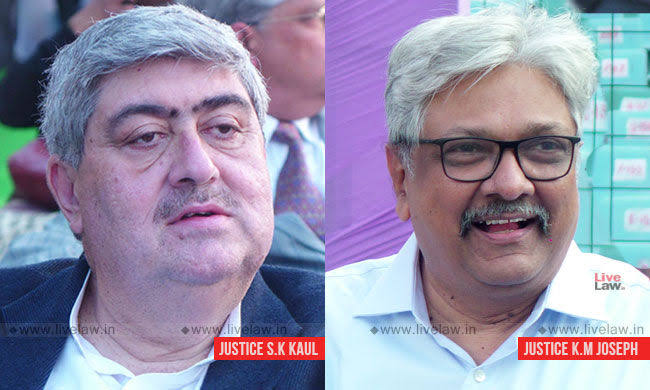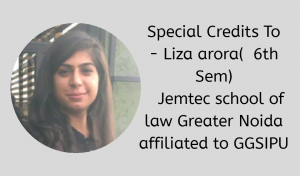
The Supreme court has observed , while hearing the case, Sonu @ SUNIL Vs, State of Madya Pradesh, that in case of theft and murder,
It is not safe to draw an inference that the person in possession of the stolen property was the murderer.
In this case, the appellant was convicted for the offences covered under Section 302 & 394/34 of IPC, i.e.
Causing hurt while committing robbery and Murder by the trial court and was given death penalty.
The High court later commuted the death penalty and awarded Life Imprisonment.
The court noted that the evidence against the appellant consist of the recovery of Mobile phone.
It was also noted that there was a gap of about two months between the date of recovery and the date of incident.

The Bench comprising of Hon’ble Justices Sanjay Kishan Kaul, and KM. Joseph delineated the test to be applied in the case of recovery of an article from an accused of committing offences other than theft also ( in this case murder).
The following are the eight points test laid down by the court:
The first thing to be established is that the theft and murder forms part of same transaction.
The circumstance may indicate that the theft and the murder have been committed at the same time but it is not safe to draw the inference that the person in possession of the stolen property was the Murderer.
- The Nature of the stolen article.
- The manner of its acquisition by the owner,
- The nature of evidence about its identification.
- The manner in which it was dealt by the accused;
- The place and circumstances of its recovery;
- The length of intervening period;
Ability or otherwise of the accused to explain its possession.
The court cited & relied on various precedents:
In case of Sanwant Khan and Anr Vs. State of Rajasthan AIR 1956 SC 54.
As per this decision, the only presumption which can be drawn under illustration (a) of Section 114 of Indian Evidence Act with respect to a person found in possession of stolen property is that, he is either the receiver of stolen property or has committed the theft of the property.
It doesn’t necessarily indicate that the theft and the murder took place at the same time.
“ Where, however, the only evidence against an accused person is the recovery of stolen property and although the circumstances may indicate that the theft and murder must have been committed on the same time.
It is not safe to draw the interference that the person in possession of the stolen property was the murderer”, the bench quoted from sanwant khan case.
The bench relied on another case i.e. Gobar V. Emperor, AIR 1943 Bom 458,
it was held in this case that the “mere fact that an accused produced shortly after the murder with ornaments which were on the murdered person is not enough to justify the inference that the accused must have commited the murder”.
- Thus the nature of stolen article.
- The manner of its acquisition by the owner.
- The nature of evidence about its identification.
- The manner in which it was dealt by the appellant.
- The place and the circumstance of its recovery;
are factors which have to be taken into consideration in arriving at the decision”.
In Baiju V. State of Madya Pradesh, AIR 1978 SC 522; the court held:
“the question whether a presumption should be drawn under illustration (a) of section 114 of the Indian Evidence Act is a matter which depends on the evidence and circumstances of each case.
The similar view was also taken In
Sri Bhagwan Vs. State of Rajasthan AIR 1978 SCC 522;
Thus , in the present case, as far as the appellant is concerned , the evidence against him essentially consist of the recovery of mobile phone and there is discrepancy about the number stated to have been stolen from the deceased and the number of phone to have been seized from the accused.
Hence, on the basis of facts of the case and precedents relied. The Bench held that it would not be safe to uphold the conviction of the appellant and he would be entitled to the benifit of doubt.

- RSPCB Recruitment 2023 | Law Officer | Last Date 17th November | Apply Now !

- NFL Recruitment 2023 | Management Trainee (LAW) | Apply Now !

- PGCIL Recruitment 2023 | Officer Trainee | LAW | Apply Now

- HPD Assam Recruitment 2023 | 302 Public Prosecutor | Last Date 30th November | Apply Now

- Supremacy of the Constitution or Parliamentary Sovereignty

- National Education Policy 2020 Highlights – NEP Objectives

- Law Graduate Jobs | Naks & Partners (Advocates & Solicitors) | Associate Legal (Drafting & Research) |

- International Health Regulation By: Prof.(Dr.) Pallavi Gupta, HOD JEMTEC School of Law

- CALL FOR INTERNS: JULY MONTH

- [Online] Interactive Certificate Course on Competition Law & Practice by MyLawman [Register by 17 June]


Leave a Reply
You must be logged in to post a comment.